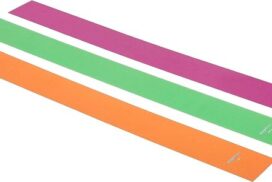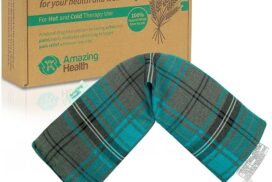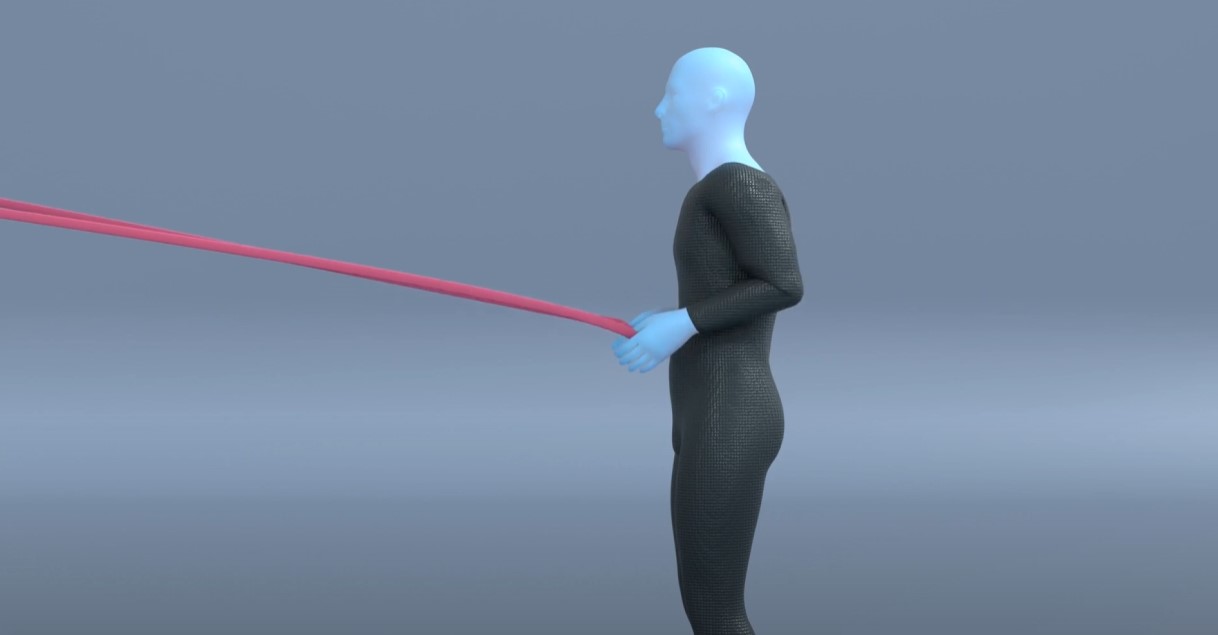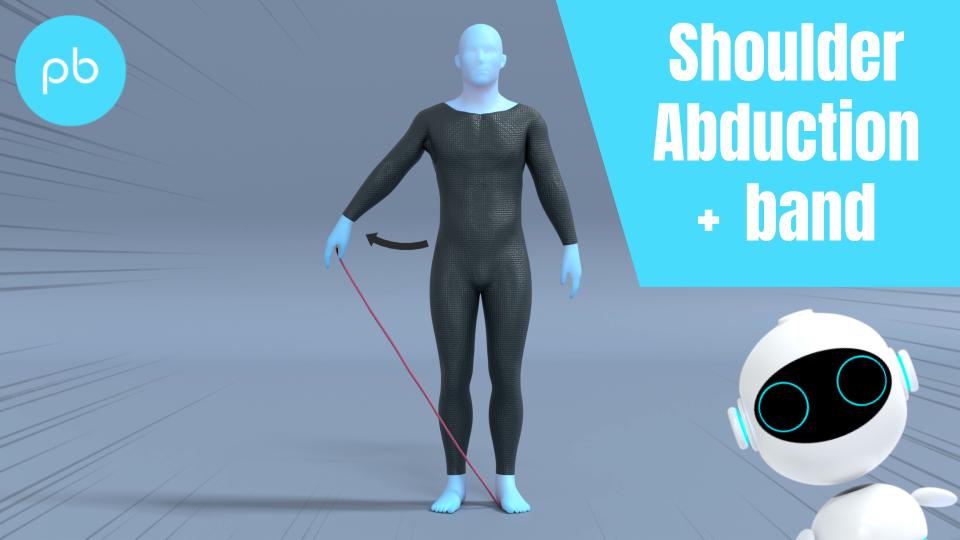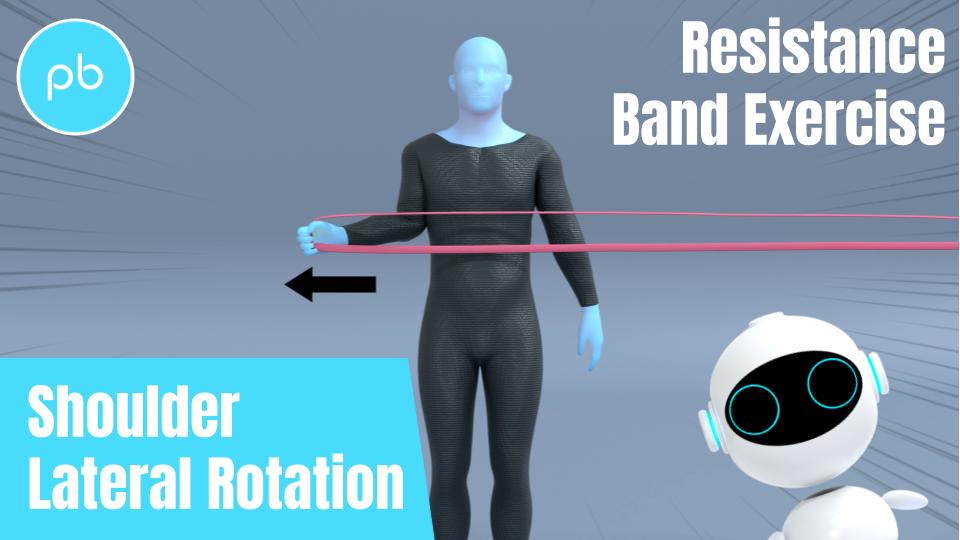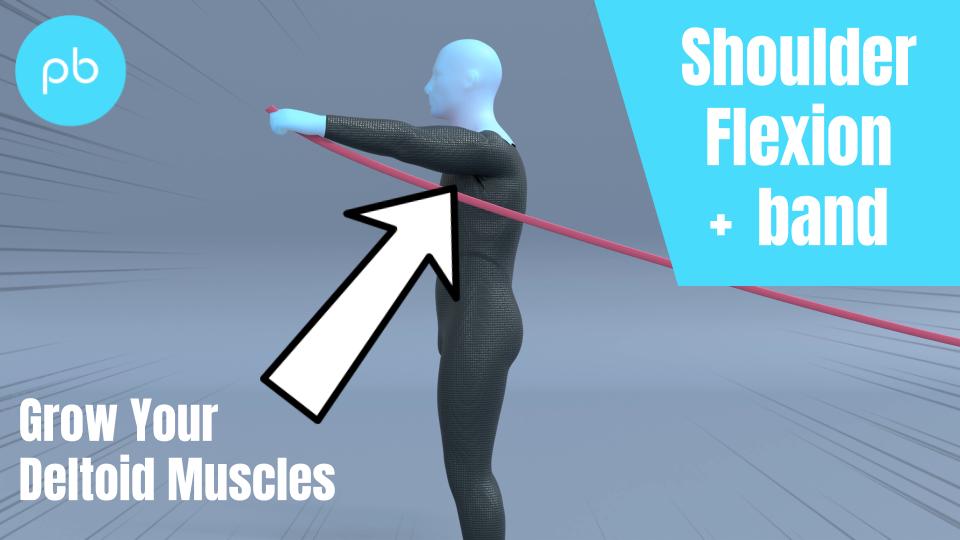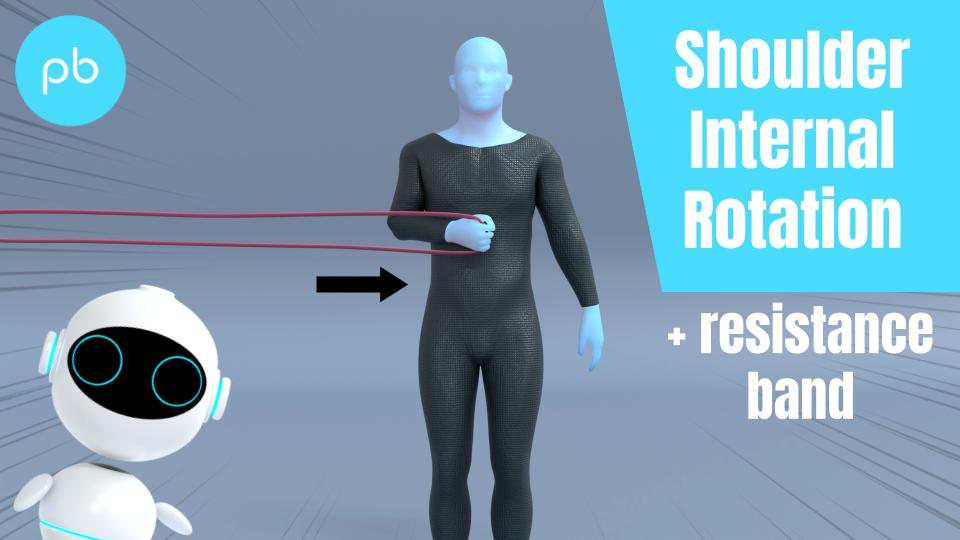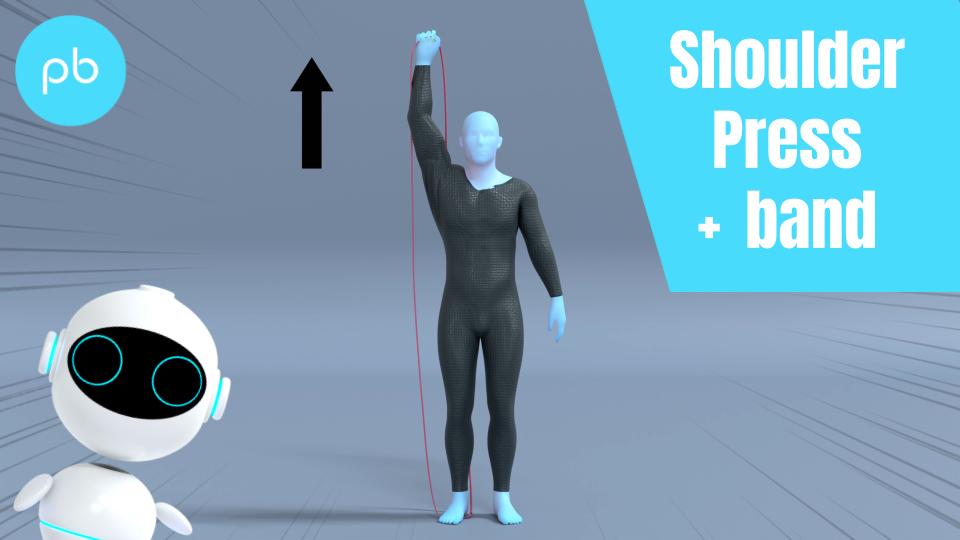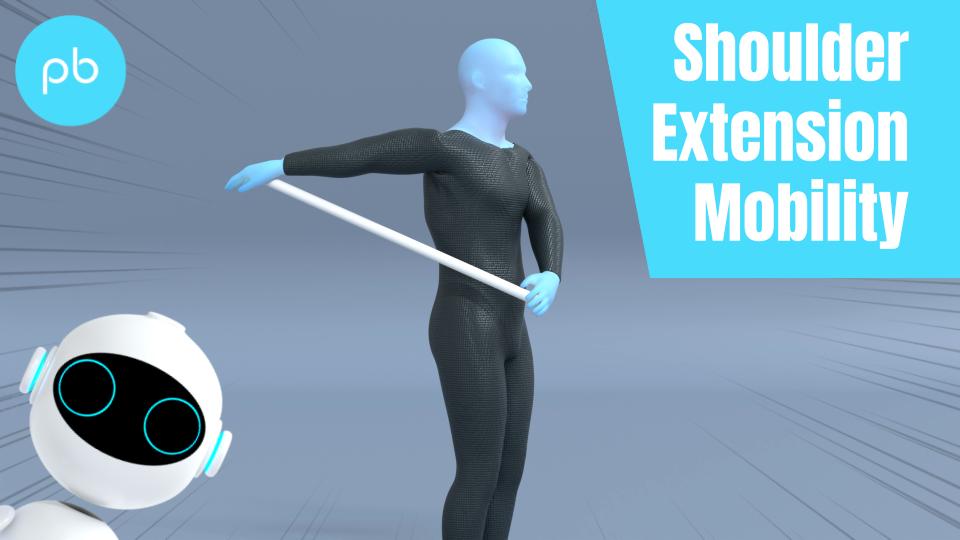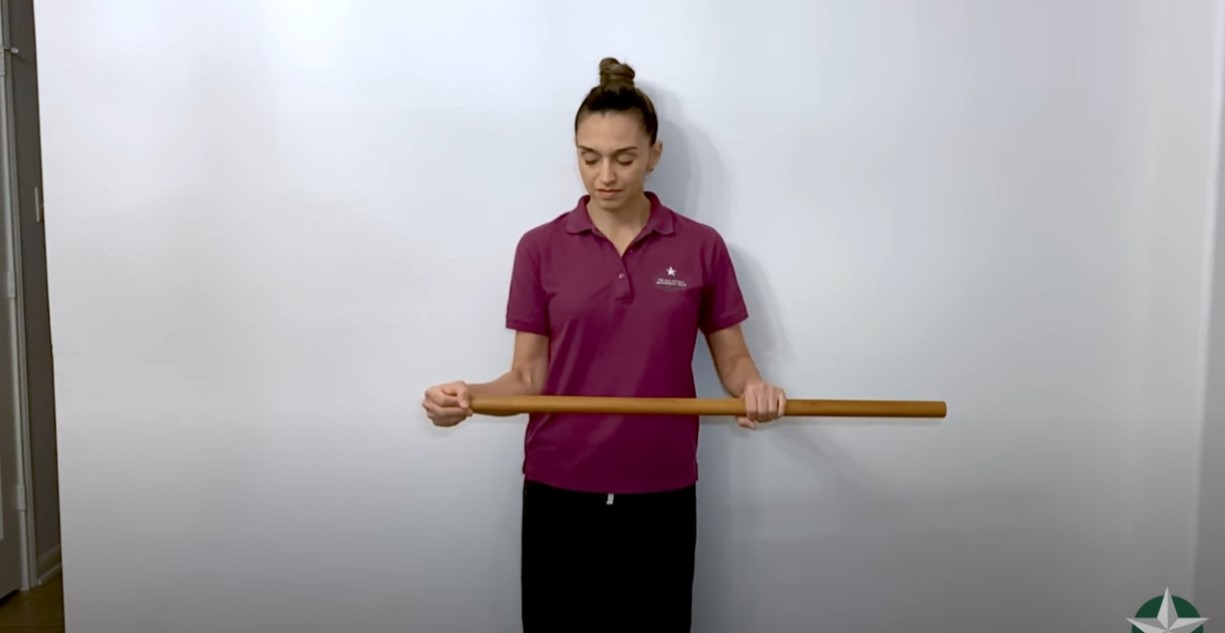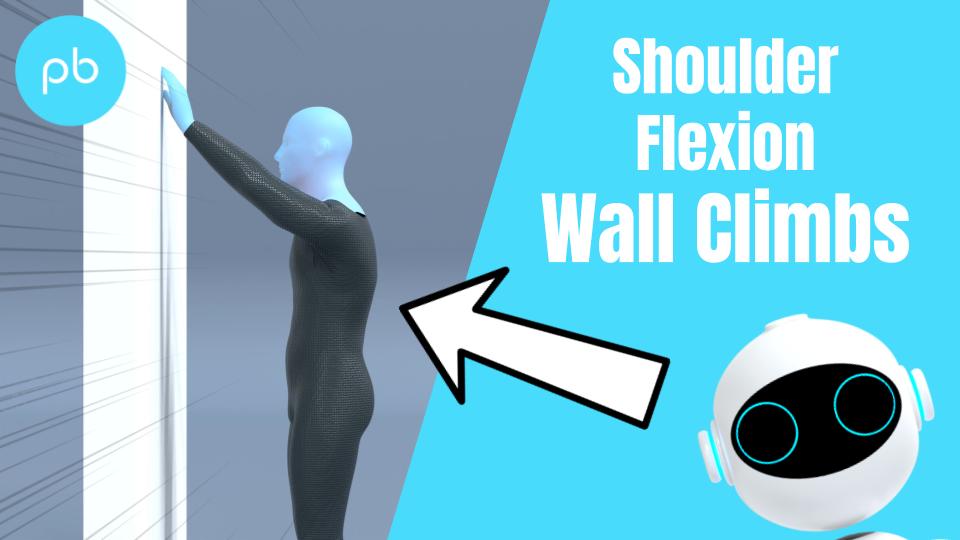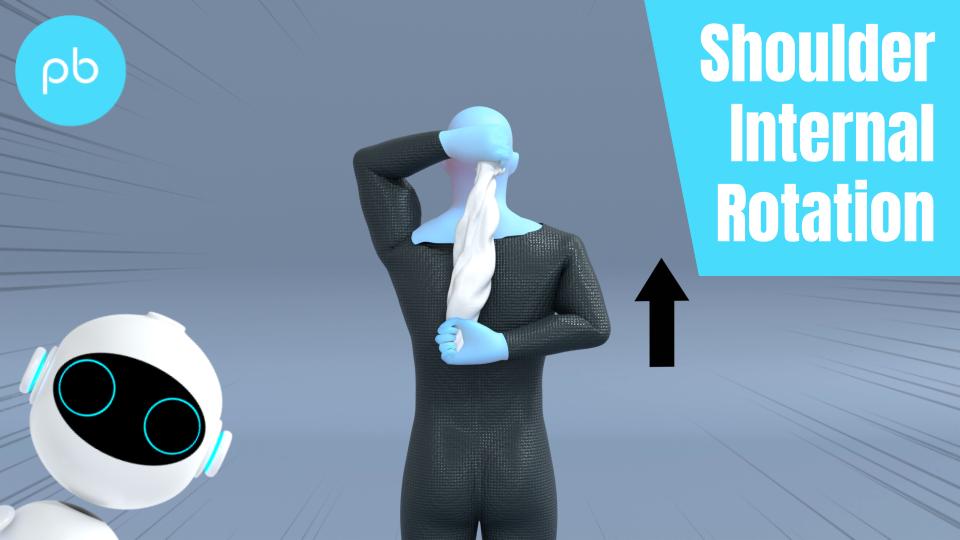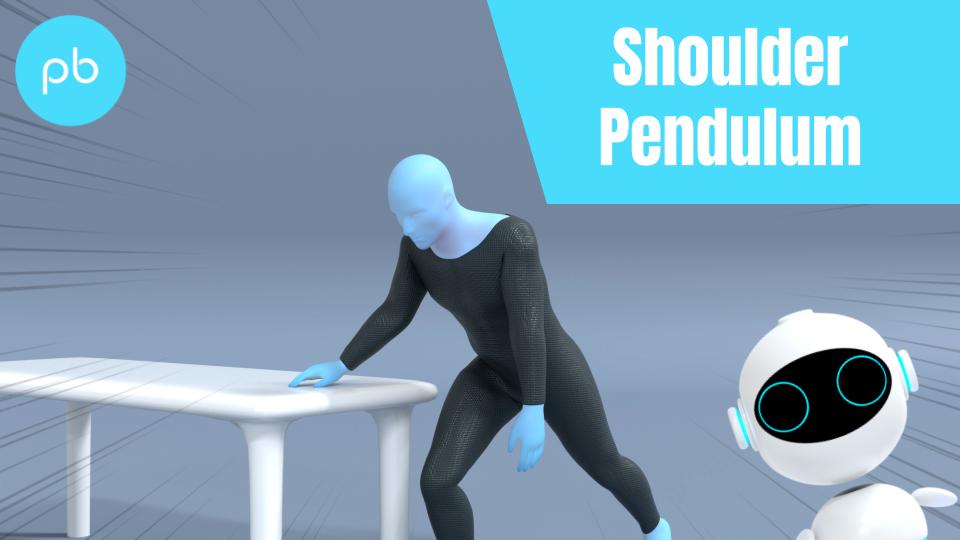
Full Report
Welcome to your free report covering the diagnosis, management and treatment options, exercises and equipment that could help in rehabilitation. Scroll down to read more or use the sidebar icons to skip ahead.
Diagnosis
Referred Neck Pain
Following a fall or specific event which has resulted in shoulder pain, however showed no specific structure within your shoulder which was irritable on testing, but is resolved with Neck active range of movement exercises, you may have injured your neck. A surprisingly high proportion of shoulder pain following trauma can be referred from the neck. This is because during the trauma or specific event the joints in your neck may have a small amount of irritation to them which is causing the nerves in your neck to refer symptoms into your shoulder, or the nerve itself got irritated during the injury.
The questions at the start looked at whether your rotator cuff, which is a collection of four muscles in your shoulder which helps generate movement in your shoulder and also offer stability to the joint, however these appear to be unaffected. We then performed some screening movements of your shoulder to check whether general mobility movements would alleviate any joint stiffness which could be causing your pain. Both of these didn't bring on any pain and the movement appeared normal, which again is encouraging.
When we looked at your neck movement we got you to perform a movement of the neck which is often restricted when the neck is injured and this appeared to improve your shoulder function. We then got you to perform a movement of the neck which is often restricted when the neck is injured this appeared to improve your shoulder function. The neck 'retraction' movement is often forgotten when moving your neck, but it is key this movement is unrestricted so you can have full movements of the neck. If there is a restriction in your neck movement due to an injury at the neck, it can refer pain down into your shoulder. You have nerves which travel from your neck down towards your shoulder, into your arms all the way to your hands. If there is an injury of the neck in which the joints are aggravated, or the nerve leading from your neck is irritated, this can cause symptoms into your shoulder and in some circumstances down into your arm. If you address the reduced neck movement and restore it to full, along with reducing the frequency of performing the painful arm movements which cause your shoulder pain, you should find that your symptoms resolve.
During your rehabilitation if you notice that the pain is travelling further down your arm towards your hands you should stop the exercises and speak with your family doctor or physiotherapist as they may be making your injury worse. Equally if you start to develop pins and needles or numbness into your arm, which is not resolved by the exercises in the programme, you should speak with your family doctor or physiotherapist. If the exercises in the programme improve any arm pain, or reduce any altered sensation in your arm, then you can continue with the exercises as they may be helping your symptoms. You only need to stop if the exercises are making your symptoms worse. This is not uncommon with neck injuries which are referring pain into your shoulder and potentially down your arm, but if they are making things worse it may be helpful to ensure the exercises are correct for you.
In the programme we will also include some shoulder mobility and strengthening exercises to ensure the joint remains mobile and strong, so that as your neck injury settles you can return to full function.
Management
Click each phase heading to see the progression of your management programme.
This phase is normally the first 24-72 hours after the initial injury and its aim is to settle any pain whilst maintaining the range of motion and function you have.

Medication
In the initial phase the use of over the counter medication may be an option. Medications such as simple pain relief and anti-inflammatories may allow the condition to be more manageable. Please consult your family doctor if you have any concerns with this impacting your current medication, or if any medical history may be impacted by the option of including this medication.
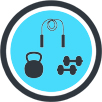
Wheat Bag
Depending on the level of discomfort in your neck and loss of range, you may find it helpful to use a wheat bag to ease any irritation and also help with any muscle spasm in the area. The heat generated from the wheat bag may help reduce any tightness in the muscles of the neck which can go into spasm as they try to protect the area. Using the wheat bag two to three times during the day, especially applied before performing the neck mobility exercise may make things a little easier. Be careful the bag isn’t too hot and check your skin for any signs of a reaction.
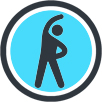
Exercises
The focus of the exercises is to restore the movement of your neck, whilst maintaining the range in your elbow and shoulder.
With shoulder pain it's quite common to try and protect it, with the muscles surrounding the joint to tighten up as you are guarding it against any further damage. This can result in further discomfort, specifically neck and elbow pain.
| Exercise | Frequency | |
| Elbow Flexion and Extension Range of Movement | 30 seconds x 2 sets | 5 x daily |
| Neck Retraction | 30 seconds x 2 sets | 5 x daily |
| Shoulder Pendulum Exercise | 30 seconds x 2 sets | 5 x daily |
| Neck Active Range of Movement | 30 seconds x 2 sets | 5 x daily |
Some things to consider with the exercises:
- The exercises for the elbow are to simply ensure the joints above and below your neck remain mobile.
- The second exercise is the one which may bring relief to your shoulder pain. You should not feel your symptoms in your shoulder increase or travel down your arm. If you do, you may find it easier to do this lying down initially, or perhaps not do it for as long, or reduce the range in which you are moving. A little discomfort or the feeling of your muscles around your neck stretching is not uncommon, but this should settle quickly after you have stopped. A mistake people often make with this exercise is poking their chin forward, which you don’t need to do, and they often instead of doing retraction end up just looking down. What can be helpful to make sure you are doing the movement correctly is to ask someone to view from the side as you are doing the exercise, or instead filming yourself on your phone and then checking how you look when you watch it afterwards.
- For the final exercise if there are any neck movements which are particularly irritable, only move to the point of pain and then ease off. Slowly over time you will be able to return to full range of motion.
- How long and how often you do the exercises at this stage is not too important. The key is little and often, and as long as you get something done every couple of hours to maintain the range that will be beneficial.
- You may find it helpful to do these exercises in a circuit type fashion, where you start off with exercise 1, have a rest, complete exercise 2 followed by a rest, continue this pattern until you complete all the exercises, and then restart.
This phase we are looking at focusing on the neck retraction exercise whilst introducing some basic shoulder mobility exercises to maintain the joints range. This will be roughly the first 2-4 weeks of your rehab.

Education
When someone suffers a neck injury following a fall or a specific event which triggered symptoms into your arm, it can be difficult not to irritate it with daily activities, such as looking left or right when driving a car. Try initially to avoid repeatedly performing movements or tasks which constantly aggravate your symptoms. As the neck injury settles down these irritations will become less frequent, but you may have to initially adapt how you perform certain tasks.
As you improve the range of movement in your neck, specifically with the retraction exercise, you should find that your general neck mobility improves and the direction which was causing you the most irritation will also settle. As you become less irritable with neck movements you will be irritating the nerve down towards your shoulder less, which will cause your symptoms to settle over time.
Remember to keep an eye on if the pain is travelling down your arm, or if you notice any pins and needles or numbness developing. If these symptoms resolve or settle with the neck exercises this is a good sign and you should continue doing the movements. However if they make things worse, or produce these symptoms, you should stop doing them and make an appointment with your family doctor or physiotherapist to ensure you are doing the right exercises as they could in fact be making things worse. If you do not experience any pain down your arm, or altered sensations, then you are OK to continue.
We have also added in some general shoulder mobility exercises in this phase to make sure the range remains full.
The aim for these first few weeks is to make sure we gain full movement in the neck, you should find that as this improves your symptoms will settle.
The timelines here are merely a guide and you may find you can progress from this phase before 2 weeks, but equally it may take longer than 4 weeks, and this will depend on the level of restriction and the amount of tissue damage caused. A good marker on when to progress to Phase 3 is when you can move your neck full in all directions, and you also have full movement of the shoulder in all directions.
There will be some movements which you find easy and may even offer some relief in the discomfort you are experiencing, others may be more challenging. You may also find it helpful to offer some variety on the angle you perform these exercises as it may make things a little easier. The point here is there is no set way to perform mobility exercises, and no two days will be the same. Don’t get discouraged by this and just make sure that you get something done at least once a day.
These movements shouldn’t cause any spike in pain, but a little bit of discomfort is expected as you move into the restricted range.

Exercises
The aim of these exercises is to offer some basic mobility to the shoulder without increasing your pain. Remember to start off easy and only increase the range after performing a few reps of each movement as a warm up.
| Exercise | Frequency | |
| Shoulder Extension Mobility | 30-60 seconds x 2 sets | 2 x daily |
| Shoulder Internal and External Rotation Mobility | 30-60 seconds x 2 sets | 2 x daily |
| Neck Retraction | 10-12 reps x 2 sets | 2 x daily |
| Shoulder Flexion Wall Climbs | 30-60 seconds x 2 sets | 2 x daily |
| Neck Rotation | 10 reps x 2 sets | 2 x daily |
Some things to consider with the exercises:
- You could perform the pendulum exercise from Phase 1 to act as a nice warm up.
- For the extension mobility exercise you can perform this movement without a stick initially, and slowly increase the range in which this is performed.
- The rotation exercises can be performed with or without a stick or towel. These may be discomforting to start initially so slowly increase the range.
- The neck retraction exercise is continued from phase 1. When you can perform this movement with ease, you can increase the range by putting a little bit of overpressure with one of your hands when you get to the end of the movement. This will ensure you have full range into retraction.
- The wall climb exercise should be performed close to the wall, so that it reduces the lever and therefore the effort required to perform this exercise. If you find this exercise easy you can simply lift your arm straight up in front of you for full range.
- If you find the next rotation movement too difficult initially, you can perform this movement lying down as this will reduce the weight going through the neck joints.
- These exercises should not cause a spike in pain, and any discomfort should reduce after 30 minutes of performing the exercise. Remember to keep your hand out in front of you during these movements.
- You may find it helpful to do these exercises in a circuit type fashion, where you start off with exercise 1, have a rest, complete exercise 2 followed by a rest, continue this pattern until you complete all the exercises, and then restart.

Symptoms
During this phase your symptoms whilst resting should start to settle and generally you will only find an increase in pain when performing movements which are restricted. You will also notice that general daily activities which were once limited, will slowly become a little easier.
This phase will be roughly 4 weeks from the start of your rehab and its aim is to build on the increased range from Phase 2 whilst adding in some basic strength work.

Education
A good marker on when to progress onto this phase is when your neck mobility for all directions is full and equal in all directions. You should have no pain or restriction when performing the retraction exercise and be able to add in the overpressure with the other hand. Your shoulder range with the exercises should be full and not cause any pain. At this stage the injury in your neck should have settled but it is not uncommon that certain movements, especially combining extension or flexion with rotation of the neck, could still be irritable. We will address this potential loss of range in this phase. Generally a discomfort with neck flexion after a neck injury is due to the soft tissue or joints in your neck being irritated when stretched. As you move through the healing stages this movement will improve with time.
The timelines on when to start this phase are only a guide, where some people can start before the 4 weeks but others may take a little longer.
After a period of reduced activity due to the pain you have been experiencing, you would expect there to be a general loss in strength in your shoulder. We will in this phase be reintroducing some basic strength work to help address and weakness.
You can continue the mobility exercises from Phase 2 still, especially if any of the movements offer relief.

Exercises
You can continue the shoulder and neck mobility exercises from Phase 2 if you find they still offer some benefit.
| Exercise | Frequency | |
| Neck Retraction with Extension | 8-10 reps x 3 sets | 2 x daily |
| Resistance Band Row | 12-15 reps x 3 sets | 2 x daily |
| Resistance Band Internal and External Rotation | 15-15 reps x 3 sets | 2 x daily |
| Resistance band shoulder flexion | 12-15 reps x 3 sets | 2 x daily |
Some things to consider with the exercises:
- The first exercise is a progression from the retraction exercise you performed in the previous stage. You may find it helpful to do a set of just the retraction movement as a warm up before doing the extension portion of the exercise. You may also find that the number of reps too high initially so reducing it to a number which is more appropriate is absolutely fine. It’s quite normal when you start performing this exercise to have a bit of discomfort in the base of your neck when you go to full extension. Build up slowly and don’t overdo things at the start, and this will ease over time. It’s important that when you do this movement you do the retraction portion of the movement, and hold that position whilst you move into extension.
- Start off with the lightest resistance band available for the strengthening exercises, and only increase the difficulty after a week on each resistance level.
- For the internal and external rotation exercises, you may find using a rolled up towel placed between your arm and torso helps to keep your shoulder in place.
- For the final exercise you aren’t taking your hand above your head so it shouldn't be painful. Vary the angle or range of movement so that it doesn’t cause you pain.
- You may find it helpful to do these exercises in a circuit type fashion, where you start off with exercise 1, have a rest, complete exercise 2 followed by a rest, continue this pattern until you complete all the exercises, and then restart.

Pacing
At this stage you should find you can do more day-to-day activities pain free. The temptation here is to go a bit overboard. A nice reminder to pace activities so that you don’t over do it, and that you spread these activities out as much as possible throughout the day.
This phase would be roughly 8 weeks from the start of your rehab.

Education
This phase may not be appropriate for everyone and if you can perform all your daily activities pain free or you have no intention of returning to sport, you can stop at Phase 3. However after a period of reduced activity you would expect your general strength to be reduced and perhaps a restriction or apprehension performing some movement, so it may help with certain activities you are struggling with.
If you intend to return to sport you should continue with these exercises.
Similar to Phase 3 the timelines here are merely a guideline and may vary. You may find that you are able to start this phase before 8 weeks if the symptoms have settled and you aren’t challenged by the exercises in the previous phase.
You should continue the mobility exercises from Phases 2 and 3, with the aim to maintain full range of motion. However you would not necessarily need to do as many sets as you previously did, and you may not need to do all the mobility movements every day, you could potentially alternate which days you perform certain movements.
The aim in this phase is to increase the strengthening exercises through range.

Exercises
You should continue the mobility exercises from Phase 3, and you can use the exercises from Phase 3 as a warm up before attempting these new exercises.
The focus of these exercises is to further challenge the strength of your back muscles, and introduce more functional movements which will help with daily activity or a return to sport.
| Exercise | Frequency | |
| Resistance Band Row | 12-15 reps x 4 sets | 1 x daily |
| Single Leg Hip Bridge | 12-15 reps x 4 sets | 1 x daily |
| Single Leg Sit to Stand | 8-12 reps x 4 set | 1 x daily |
| Walking Lunges | 12-15 reps x 4 set | 1 x daily |
Some points to consider with the exercises.
- All the strength exercises should be performed in a slow and controlled manner.
- The first exercise is challenging both the large and small muscles in your back.
- The second exercise is a progression from the exercise we completed in phase 2, and will be working the muscles in your back and leg. As it is single leg it will be more challenging. If this is too difficult you can perform this movement on two legs to start with.
- The third exercise is a progression from the sit to stand exercise in the previous phase. As you are doing this on one leg your trunk muscles will have to work harder to stabilise the movement.
- The final exercise is not only working your leg muscles, but will also be working your trunk and back muscles in a dynamic and functional movement. To make this exercise more challenging you can perform this whilst holding onto some weight, but you should remain in good form and control throughout.
- These exercises should not cause a spike of pain, but you may find that there is a bit of discomfort for roughly 30 minutes after exercising, which is OK.

Return to Sport or Activity
Depending on your sport or activity of choice, you may want to perform some upper body weight bearing exercises such as a plank or press ups. It may also be suitable to do higher level dumbbell strengthening exercises to further increase your strength.
As a general rule, try and aim for two pain-free training sessions at a reduced duration or intensity before increasing.
For example, if you normally play 60 minutes of tennis, aim to play for 30 minutes in a non-competitive environment for two non-consecutive days.
Having a day's rest between sessions allows you to have appropriate rest and for your body to repair and become stronger.
Once you have found a duration or intensity you can tolerate with no flare up, aim to increase the next session by 10%. This can seem like a slow and conservative process however the research has shown this is the optimum level of increase to avoid an overuse injury. Increasing duration or intensity by more than 10% significantly increases your chance of injury, so only increase one or the other by this amount. As you will have been away from your sport for a number of months, you will have lost some of your fitness conditioning in this time and will need to build up slowly.
Over time you will be able to slowly return to your pre-injury level of activity without regressing back to any acute flare-up.

